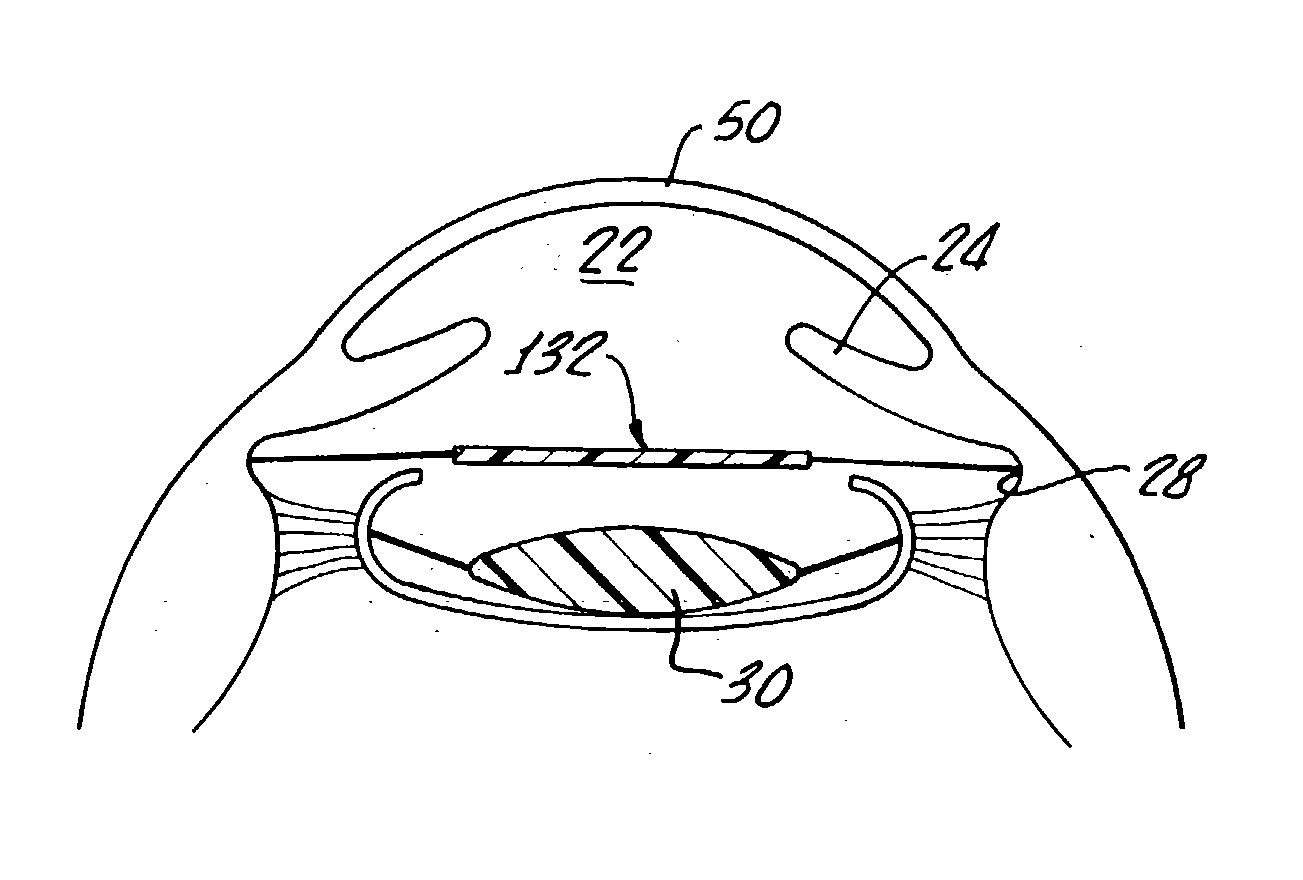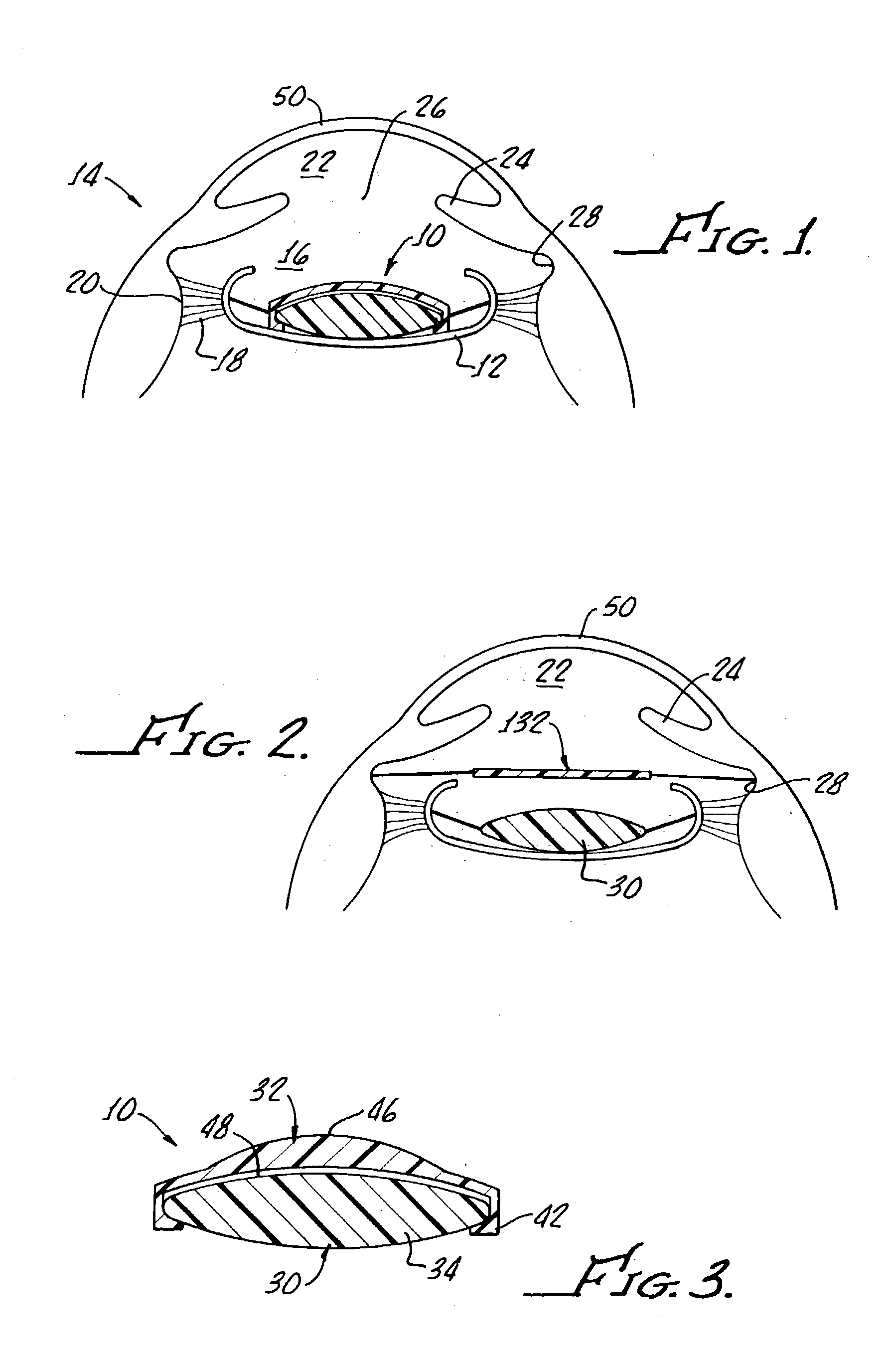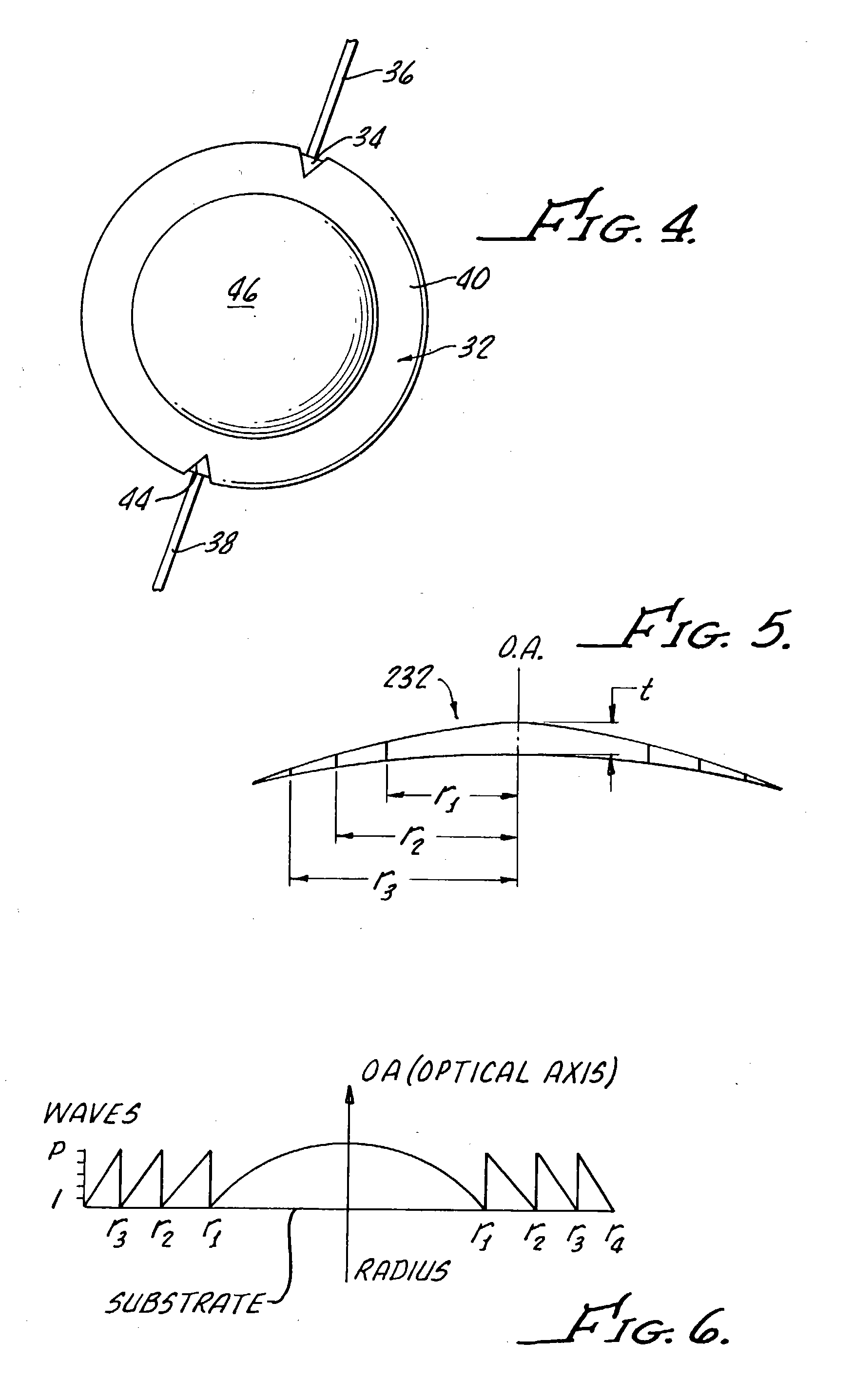Primary and supplemental intraocular lens
a technology of intraocular lenses and supplementary lenses, which is applied in the field of intraocular lenses, can solve the problems of high risk of inaccuracy, difficult and inaccurate procedures, and insufficient spacing of precise corrective power selection by physicians, and achieve the effect of inhibiting the formation of cellular deposits and sufficient spacing
- Summary
- Abstract
- Description
- Claims
- Application Information
AI Technical Summary
Benefits of technology
Problems solved by technology
Method used
Image
Examples
Embodiment Construction
[0026] Referring to the drawings in more detail, FIG. 1 shows an intraocular lens system 10 according to the present invention implanted in the capsular bag 12 of an eye 14. The capsular bag 12 is held in the posterior chamber 16 of the eye 14 by a set of suspensory ligaments or zonules 18 that extend between the capsular bag 12 and an annular ciliary muscle 20. The posterior chamber 16 is separated from the anterior chamber 22 of the eye 14 by an annular iris 24, which defines the variable opening or aperture known as the pupil 26. The iris is separated from the ciliary muscle by an annular groove known as the sulcus 28.
[0027] Turning now to FIGS. 3 and 4, the intraocular lens system 10 includes a primary intraocular lens 30 that is configured to correct the vision of a patient, and a supplemental intraocular lens 32 that is configured to modify the correction of the primary intraocular lens 30. The supplemental intraocular lens 32 may be implanted simultaneously with the primary ...
PUM
 Login to View More
Login to View More Abstract
Description
Claims
Application Information
 Login to View More
Login to View More - R&D
- Intellectual Property
- Life Sciences
- Materials
- Tech Scout
- Unparalleled Data Quality
- Higher Quality Content
- 60% Fewer Hallucinations
Browse by: Latest US Patents, China's latest patents, Technical Efficacy Thesaurus, Application Domain, Technology Topic, Popular Technical Reports.
© 2025 PatSnap. All rights reserved.Legal|Privacy policy|Modern Slavery Act Transparency Statement|Sitemap|About US| Contact US: help@patsnap.com



